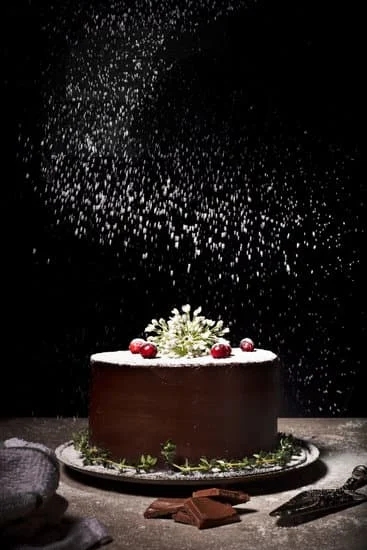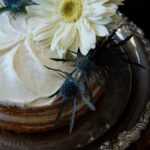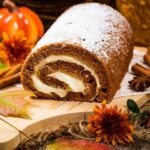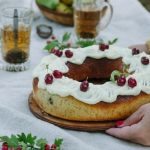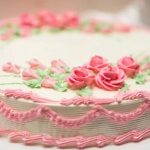Are you looking to learn how to start cake decorating? Embarking on this journey means diving into a world of creativity, beauty, and deliciousness. Cake decorating is not just about making a cake look pretty; it’s about the joy of creating edible works of art that bring happiness to others. Whether you’re a complete novice or someone looking to enhance their skills, this guide will provide you with the essential steps to kickstart your cake decorating adventure.
Cake decorating is a fulfilling and creative hobby that allows you to express yourself artistically while indulging in your passion for baking. From intricate designs to simple yet elegant creations, the possibilities are endless when it comes to decorating cakes. Not only does cake decorating provide a therapeutic outlet for stress relief, but it also offers a sense of accomplishment when you see your finished masterpiece.
To begin your cake decorating journey, it is crucial to understand the essential tools and supplies needed. From piping bags and tips to offset spatulas and turntables, having the right equipment at hand will make your decorating process smoother and more enjoyable. With the proper tools in place, you can focus on honing your skills and experimenting with different techniques to take your creations to the next level.
Why Cake Decorating Is a Fulfilling and Creative Hobby
Cake decorating is not just about creating beautiful and delicious cakes; it is also a fulfilling and creative hobby that can bring joy to both the decorator and those who get to enjoy the finished product. There are several reasons why cake decorating can be such a rewarding pastime.
1. Creativity: One of the main reasons why many people are drawn to cake decorating is the opportunity it provides to express creativity. From choosing color combinations to experimenting with different designs, cake decorating allows for endless possibilities to showcase your artistic side.
2. Personalization: Cakes are often an integral part of celebrations, whether it’s birthdays, weddings, or holidays. By learning how to decorate cakes, you can add a personal touch to special occasions by creating custom designs that reflect the personality and preferences of the recipient.
3. Sense of Accomplishment: There is a sense of satisfaction that comes with successfully completing a beautifully decorated cake. Seeing your hard work pay off in the form of a stunning creation can boost your confidence and motivate you to continue honing your skills.
Learning how to start cake decorating may seem daunting at first, but with the right tools, supplies, and techniques, you can embark on this exciting journey towards unleashing your creativity in the kitchen. With dedication and practice, you can master the art of cake decorating and turn it into a fulfilling hobby that brings joy to both yourself and others.
Essential Tools and Supplies Needed to Start Cake Decorating
Cake decorating is a delightful and artistic hobby that allows individuals to express their creativity through beautifully designed cakes. To start your journey in cake decorating, it is essential to have the right tools and supplies at your disposal. Here are some of the must-have items you will need to begin your cake decorating adventure:
- Offset spatula: An offset spatula is a versatile tool used for spreading icing, smoothing surfaces, and creating designs on cakes.
- Piping bags and tips: Piping bags are indispensable for adding intricate details and designs to cakes, while various tips allow for different frosting patterns.
- Turntable: A turntable makes it easier to frost cakes evenly and decorate them from all angles.
- Fondant tools: If you plan on working with fondant, invest in tools such as rolling pins, fondant smoothers, and shaping tools for creating detailed decorations.
In addition to these basic tools, it is important to have a good quality cake stand or board to display your finished creations. It’s also recommended to have a variety of food coloring gels, edible glitter, and other decorative elements to add flair to your cakes. With the right tools in hand, you’ll be well-equipped to bring your cake decorating visions to life.
Starting cake decorating can be overwhelming with the myriad of options available in the market. However, investing in high-quality tools will not only make your decorating process easier but also enhance the overall look of your cakes. Remember that practice makes perfect, so don’t be discouraged if your first few attempts don’t turn out as expected. With dedication and creativity, you’ll soon be on your way to mastering the art of cake decorating.
Choosing the Right Type of Cake for Decorating
When learning how to start cake decorating, one of the key considerations is choosing the right type of cake for your project. The type of cake you choose can greatly impact the design and overall outcome of your decorating efforts. One important factor to consider is the texture and density of the cake.
Some cakes, like sponge cakes, are softer and more delicate, making them ideal for intricate designs with fondant or frosting. On the other hand, denser cakes like pound cake or butter cake are better suited for stacking layers and carving.
Another factor to consider when choosing a cake for decorating is the flavor profile. Different types of cakes offer different flavors and may pair better with certain fillings and frostings. For example, a vanilla sponge cake pairs well with a variety of fruit fillings, while a rich chocolate cake may be better suited for pairing with ganache or salted caramel fillings. Consider the preferences of your intended audience or customer when selecting a cake flavor for your decorating project.
In addition to texture and flavor, it’s also important to consider the size and shape of the cake when choosing one for decorating. Certain designs may require a larger or smaller sized cake, while others may benefit from unique shapes like square or rectangular cakes.
Ultimately, the type of cake you choose should align with the design you have in mind and provide a solid foundation for your creative vision to come to life. By carefully selecting the right type of cake for your decorating project, you can set yourself up for success and create stunning edible masterpieces that delight both eyes and taste buds alike.
Basic Cake Decorating Techniques for Beginners
Cake decorating is a delightful and creative art form that can bring joy to both the decorator and those who get to enjoy the finished product. Whether you are looking to start a new hobby, impress friends and family with beautifully decorated cakes, or even pursue a career in cake decorating, learning the basics is essential.
In this section, we will explore some fundamental cake decorating techniques that are perfect for beginners looking to dip their toes into this sweet world of creativity.
Gathering Essential Tools
Before you can start decorating your cakes, it’s important to gather the necessary tools and supplies. Some basic items you will need include icing bags, piping tips, offset spatula, turntable, cake leveler, and a smoothing tool. These tools will help you achieve clean lines, precise designs, and professional-looking decorations on your cakes. Investing in quality tools from the beginning will make your journey into cake decorating much smoother.
Basic Buttercream Frosting Techniques
One of the most common types of frosting used in cake decorating is buttercream frosting. Learning how to properly prepare and apply buttercream frosting is a crucial skill for any beginner decorator. Practice different piping techniques such as rosettes, stars, shells, and borders on parchment paper before applying them directly onto your cakes. Experiment with different colors and consistencies of buttercream to create beautiful designs on your cakes.
Working With Fondant
Fondant is another popular choice for cake decorators as it provides a smooth and polished finish to cakes. Kneading fondant until it’s pliable and rolling it out evenly takes practice but yields stunning results. Beginners can start by covering simple cakes with fondant or creating basic shapes like flowers or bows.
With time and practice, you can move on to more complex fondant decorations such as figurines or intricate patterns on your cakes. Remember that patience is key when working with fondant as it can be temperamental at times.
By mastering these basic cake decorating techniques for beginners, you’ll be well on your way to creating beautiful works of edible art. Remember that practice makes perfect in the world of cake decorating so don’t be discouraged by initial mistakes – they are all part of the learning process. Celebrate your progress and have fun experimenting with different designs and styles as you hone your skills in this creative craft.
Tips for Avoiding Common Mistakes in Cake Decorating
Cake decorating can be an incredibly rewarding and enjoyable hobby, but it also comes with its fair share of challenges. As a beginner in the world of cake decorating, it is important to be aware of common mistakes that can occur during the decoration process. One of the most common mistakes is not properly preparing your cake before decorating. Make sure to level your cake layers, apply a crumb coat, and chill your cake before adding any decorations.
Another mistake to watch out for is using the wrong consistency of icing or frosting. If your icing is too thin, it won’t hold its shape when piping decorations, while icing that is too thick can be difficult to work with. Finding the right consistency takes practice, so don’t get discouraged if your first few attempts don’t turn out as planned.
Additionally, not allowing enough time for decorations to set or dry properly is another common mistake in cake decorating. Rushing through the decorating process can result in smudged or misshapen decorations. Patience is key when it comes to cake decorating, so make sure to give your creations ample time to set before serving or transporting them.
| Common Mistakes | Tips for Avoidance |
|---|---|
| Not properly preparing the cake before decorating | Level cake layers, apply a crumb coat, and chill the cake before decorating. |
| Using the wrong consistency of icing or frosting | Practice finding the right consistency; don’t get discouraged by initial results. |
| Not allowing enough time for decorations to set | Exercise patience in setting and drying times; don’t rush through the process. |
Advancing Your Skills
Have you ever marveled at intricately decorated cakes and wondered how to take your cake decorating skills to the next level? Moving beyond basic techniques and into intermediate cake decorating can open up a whole new world of creative possibilities. In this section, we will explore some key intermediate cake decorating techniques that will enhance your skills and help you create stunning works of edible art.
One essential intermediate cake decorating technique is working with fondant. Fondant allows for smoother finishes, intricate designs, and sculptural elements that are not possible with buttercream alone. Learning how to cover a cake smoothly with fondant, create intricate patterns, and sculpt figures will elevate your cakes to a professional level. Practice patience and attention to detail as you work with fondant, as it can be unforgiving but incredibly rewarding.
Another important skill to master in intermediate cake decorating is piping techniques. From creating delicate lace designs to intricate floral piping, mastering different piping tips can add depth and texture to your cakes. Practice consistency in pressure and movement as you pipe various designs onto cakes and cupcakes.
Experiment with different piping tips, such as round tips for dots or writing, star tips for borders or rosettes, and petal tips for flowers. With practice, you’ll be able to create stunning decorations that will impress friends and clients alike.
Lastly, exploring advanced techniques such as stenciling, airbrushing, or sugar flower making can take your cake decorating skills to the next level. These techniques require practice, patience, and a willingness to experiment with new materials. Consider taking workshops or online courses to learn these advanced skills from expert decorators. Remember that every mistake is an opportunity to learn and grow in your journey as a cake decorator.
| Intermediate Cake Decorating Techniques | Description |
|---|---|
| Working with Fondant | Learn how to cover cakes smoothly with fondant, create intricate patterns, and sculpt figures. |
| Piping Techniques | Master different piping tips for creating lace designs, floral patterns, borders, rosettes, etc. |
| Advanced Techniques | Explore stenciling, airbrushing, sugar flower making for more intricate cake decorations. |
Building a Portfolio and Starting a Cake Decorating Business
Building a solid portfolio and transitioning into starting a cake decorating business can be an exciting next step for aspiring cake decorators. Establishing a strong portfolio not only showcases your skills and creativity but also serves as a powerful tool for attracting potential clients and customers. Your portfolio should feature a variety of your best work, highlighting different styles, techniques, and themes to demonstrate the range of your abilities.
Marketing Yourself and Your Business
One key aspect of building a successful cake decorating business is effective marketing. Utilize social media platforms such as Instagram, Facebook, and Pinterest to showcase your creations and attract a following. Engage with your audience by sharing behind-the-scenes footage, tutorials, and engaging content that highlights your unique style. Networking within the local community by participating in events, collaborating with other businesses, or offering workshops can also help spread the word about your services.
Setting Up Your Cake Decorating Business
When starting a cake decorating business, it’s essential to consider the legal requirements involved in operating a food-based business. This includes obtaining necessary permits, licenses, and certifications to ensure compliance with health regulations.
Additionally, setting up an online presence through a professional website or online marketplace can help reach a broader audience. Pricing your cakes competitively while considering factors such as ingredients cost, time spent on decoration, and market demand is also crucial for establishing profitability in your business venture.
By developing a strong portfolio, effectively marketing yourself and your business, and understanding the logistics of running a cake decorating business, you can turn your passion for cake decorating into a fulfilling career opportunity. With dedication, creativity, and strategic planning, starting a cake decorating business can be both rewarding personally and financially.
Resources and Courses for Further Learning in the Art of Cake Decorating
If you have discovered a passion for cake decorating and want to further enhance your skills, there are numerous resources and courses available to help you expand your knowledge in this art form. Whether you’re looking to refine your techniques, learn new decorating styles, or even start a career in the field, these resources can be incredibly valuable.
One way to continue learning about cake decorating is by taking online courses or attending workshops offered by experienced professionals in the industry. There are many platforms that offer a variety of classes ranging from beginner level to advanced level, allowing you to choose courses that best suit your current skill set and goals. These courses often cover topics such as advanced decorating techniques, working with different types of icing, creating intricate designs, and much more.
In addition to formal courses, joining cake decorating forums and online communities can also provide valuable insights and tips from fellow enthusiasts and professionals. These platforms allow you to connect with like-minded individuals, seek advice on specific techniques or challenges you may be facing, and share your own creations for feedback.
Engaging with these communities can help you stay updated on the latest trends in cake decorating and continue honing your craft in a supportive environment. By taking advantage of these resources, you can take your passion for cake decorating to new heights and continue growing as an artist in this creative field.
Conclusion
As you embark on your journey into the world of cake decorating, remember that it is not just about creating beautiful confections, but also about expressing your creativity and passion in a unique way. By learning the essential tools and supplies needed, selecting the right type of cake, mastering basic techniques, and avoiding common mistakes, you are well on your way to becoming a skilled decorator.
To truly excel in cake decorating, however, it is important to continue advancing your skills by exploring intermediate techniques and challenging yourself to try new designs. Building a portfolio of your work can help showcase your talent and may even lead to opportunities to start a cake decorating business of your own. Remember to stay inspired by seeking out resources and courses for further learning in this art form.
In conclusion, embrace your passion for cake decorating and let your creativity shine in the kitchen. Whether you are looking to turn this hobby into a full-fledged career or simply want to impress friends and family with your creations, the key is to practice patience and dedication. So go ahead, pick up that piping bag, experiment with different flavors and designs, and enjoy the sweet satisfaction of bringing your visions to life through cake decorating.
Frequently Asked Questions
How Do I Start a Cake Decorator?
Starting a career as a cake decorator typically involves gaining skills through education and hands-on experience. One common path is to enroll in culinary school or take specialized courses in cake decorating techniques. Building a portfolio of your work, either through school projects or personal practice, can help showcase your skills to potential clients or employers.
What Is the First Step in Decorating a Cake?
The first step in decorating a cake is usually to prepare the surface of the cake for decoration by applying a crumb coat of frosting. This thin layer helps seal in any loose crumbs and provides a smooth base for the final layer of frosting.
Once the crumb coat has set, you can then proceed with adding more frosting, fondant, piping designs, or other decorative elements to complete the look of the cake.
Is It Hard to Learn How Do You Decorate Cakes?
Learning how to decorate cakes can be challenging for beginners, as it requires mastering various techniques like piping, fondant work, and sugar crafting. However, with practice and patience, anyone can improve their skills over time.
Starting with simple designs and gradually working up to more complex creations can help build confidence and expertise in cake decorating. Additionally, taking classes from experienced decorators or watching online tutorials can provide valuable tips and guidance along the way.

Welcome to our cake decorating blog! My name is Destiny Flores, and I am the proud owner of a cake decorating business named Cake Karma. Our mission is to provide delicious, beautiful cakes for all occasions. We specialize in creating custom cakes that are tailored specifically to each customer’s individual needs and tastes.

